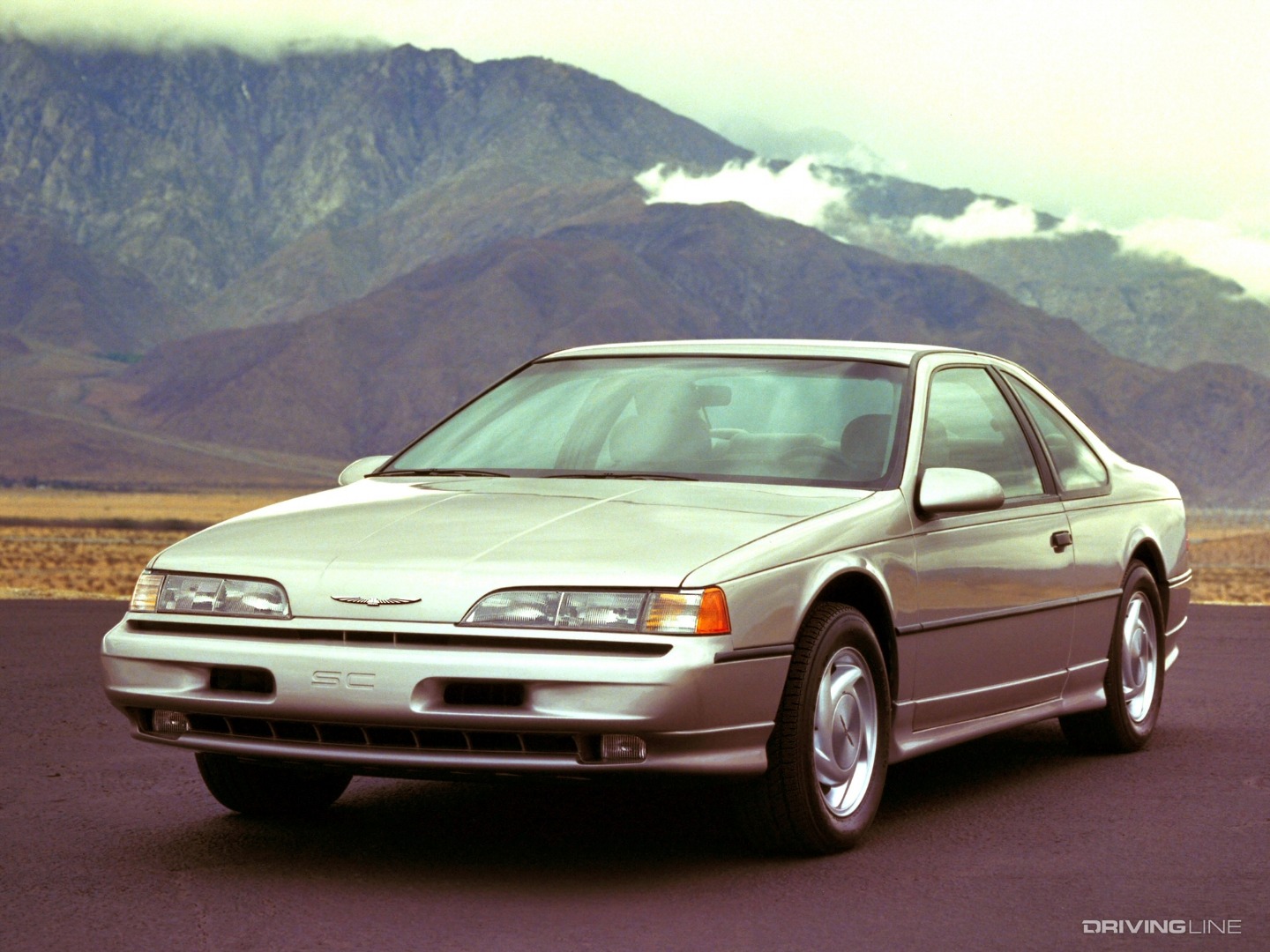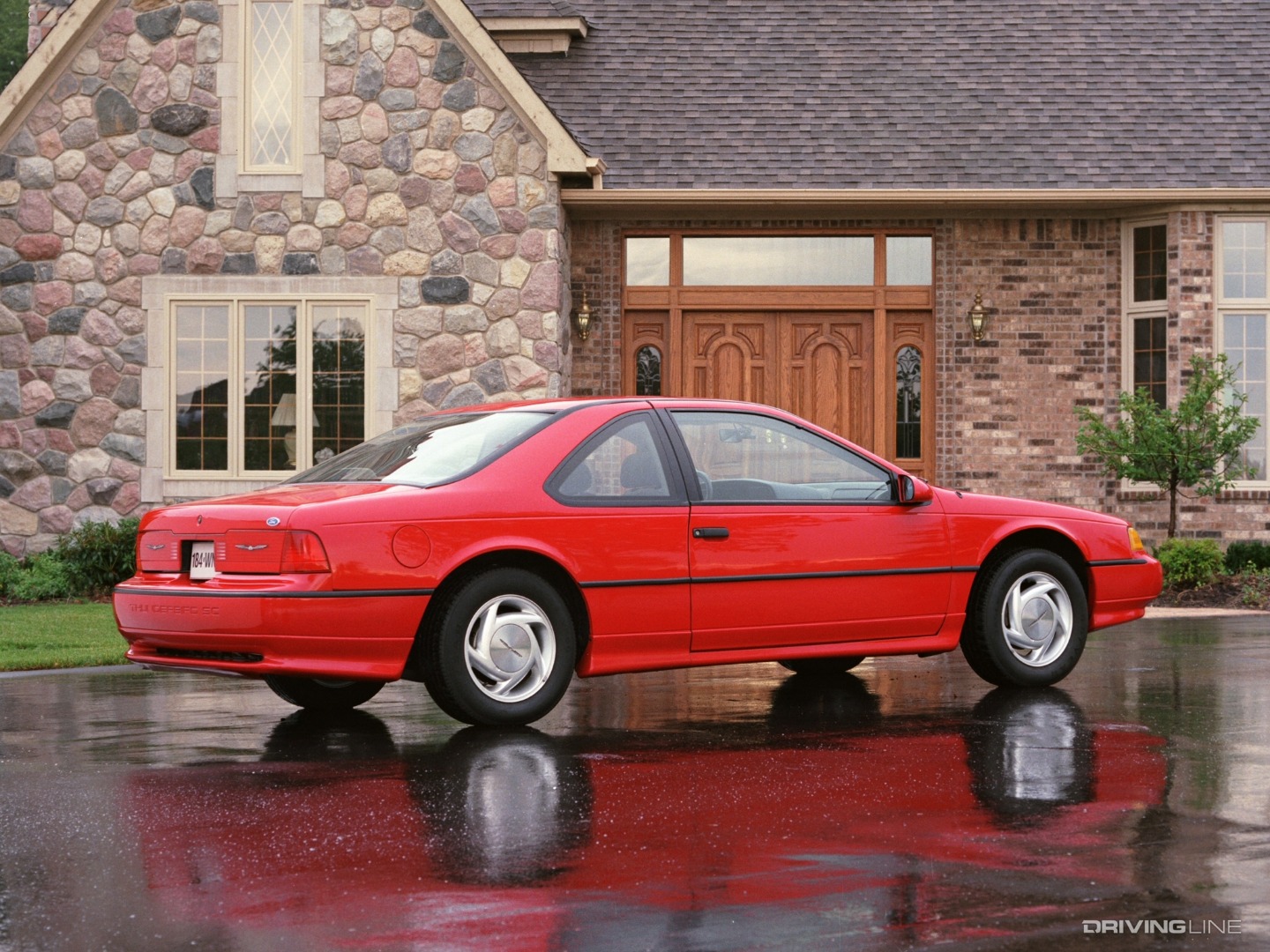The '80s were a time of experimentation for many automakers emerging out from under the dark times imposed by the power-choking emissions regulations and energy crisis of the previous decade. New technologies were eagerly embraced, especially electronic controls that promised better engine management and a balance between power and pollution that had previously been out of reach.
Forced induction quickly became a favorite avenue to output for car companies both import and domestic. With the ability to more carefully meter fuel flow came the realization that turbochargers and superchargers had the potential to turn lackluster engines into potent powerplants.
Eager to push its flagship coupe to the forefront, Ford would tag-in each of these technologies when developing the ninth and tenth generation Thunderbirds. These back-to-back blown 'Birds would provide an alternative to the ubiquitous 5.0L V8 engine and remain an intriguing footnote in the history of the Blue Oval.
From Dud to Stud
The Thunderbird had spent most of the '70s muddling around as an almost comically-proportioned land barge. In 1980, the car was cut down to size in an attempt to reposition it as a more fuel-efficient vehicle, but it wasn't until the 1983 model year that it escaped the hard angles that had defined it for nearly a decade and embraced a new, free-flowing aero-friendly shape. Its 0.35 drag coefficient earned it the "Aero Bird" nickname both on the street and in NASCAR, where it started an impressive run piling up Sunday wins.

1983 also marked the introduction of the Turbo Coupe, which was slotted in above the mid-tier 5.0 as the most expensive version of the car available. This was a bold move: The 2.3L engine had half the cylinders of the V8, but generated nearly the same horsepower (145 versus 140), paired with 180 lb-ft of torque with its Garret turbocharger pushing 10 psi.
The kicker was better fuel economy than the eight, a trick which Ford was counting on to lure in forward-thinking buyers curious about turbochargers. The car also came with a limited-slip rear differential and a sportier overall appearance inside and out, and in its first year it was manual-only, with the five-speed signaling to shoppers and rivals (like the BMW 6 Series) that the Thunderbird was serious about performance.
Close to 150,000 Aero Birds were sold that first year, a huge step-up over the previous squared model car, and of that number, roughly 10 percent were Turbo Coupes. This kept the turbo in the mix moving forward, gaining an extra 15hp a couple of years later and, of course, an automatic gearbox shortly after its introduction.

A completely new Turbo Coupe body style appeared in 1987, matched with an improved intercooled IHI turbo setup that added 50 percent more boost. Many of the mechanical details were borrowed from the Mustang SVO, a vehicle that had also dared to threaten the supremacy of the 5.0. For five-speed cars, power jumped to 190hp, a number that was sliced to 150 if the four-speed automatic was ordered. Riding on the same Fox-based platform as before, the ducted hood and visually lengthened front end was a dramatic update of what had already been a popular model.
Supercharged
In 1989, it was time for a new Thunderbird platform, the MN12, that featured a longer wheelbase paired with an even more slippery aero package. Gone was the solid rear axle, and in its place was a fully-independent suspension front and rear.

Most surprising, however, was the decision to debut the new T-Bird without a single eight-cylinder engine in the lineup. Instead, as an upgrade over the base 3.8L V6, Ford elected to offer a supercharged V6 of the same displacement. Called the Super Coupe, it delivered 210hp and 315 lb-ft of torque, and could be ordered with either a five-speed manual or a four-speed automatic transmission.
What else did the Thunderbird SC bring to the table? Sixteen-inch wheels, four-wheel disc brakes, a limited-slip diff and adjustable shocks joined the 12 psi of boost from its Eaton supercharger. By the time the SC left the market, output had jumped to 230hp and 330 lb-ft, making it a formidable grand touring car and giving it a 0-60 time of 7.5 seconds.

Unfortunately, the tenth-gen Thunderbird arrived just in time to see the SUV onslaught decimate the concept of personal luxury cars. As compared to the Turbo Coupe, very few of these supercharged cars, less than 60,000, were sold. Even the standard T-Bird struggled to find an audience (despite Ford adding a 200hp 5.0 back onto the build sheet in 1991, and then replacing it with the new 4.6L modular V8 in '94), taking nearly nine years of sales to match what the earlier Thunderbird had done in a mere six. The Super Coupe left the scene in 1995, with the rest of the lineup ending production in 1997.
Blown Away
Although forced induction wasn't entirely new to the Thunderbird line-up (first-generation cars offered a very rare, 300hp supercharged V8 for 1957), the '80s demonstrated just how viable it could be in transforming less-than-exciting vehicles into something that was actually fun to drive. Surging into the '90s, Ford's supercharged T-Bird drove this point home and was a victim of market circumstance rather than any perceived inadequacies of the car itself.

Is it a stretch to say that the experience with the MN12 platform would eventually lead to the string of supercharged Mustangs, SVT's Terminator Cobra in '03 and the GT500 shortly thereafter, as well as the supercharged Ford SVT Lightning pickup? There's no doubt that the confidence that Blue Oval brass had in the potential displayed in their supercharged past helped pave the way for blowers to dominate the company's performance future.